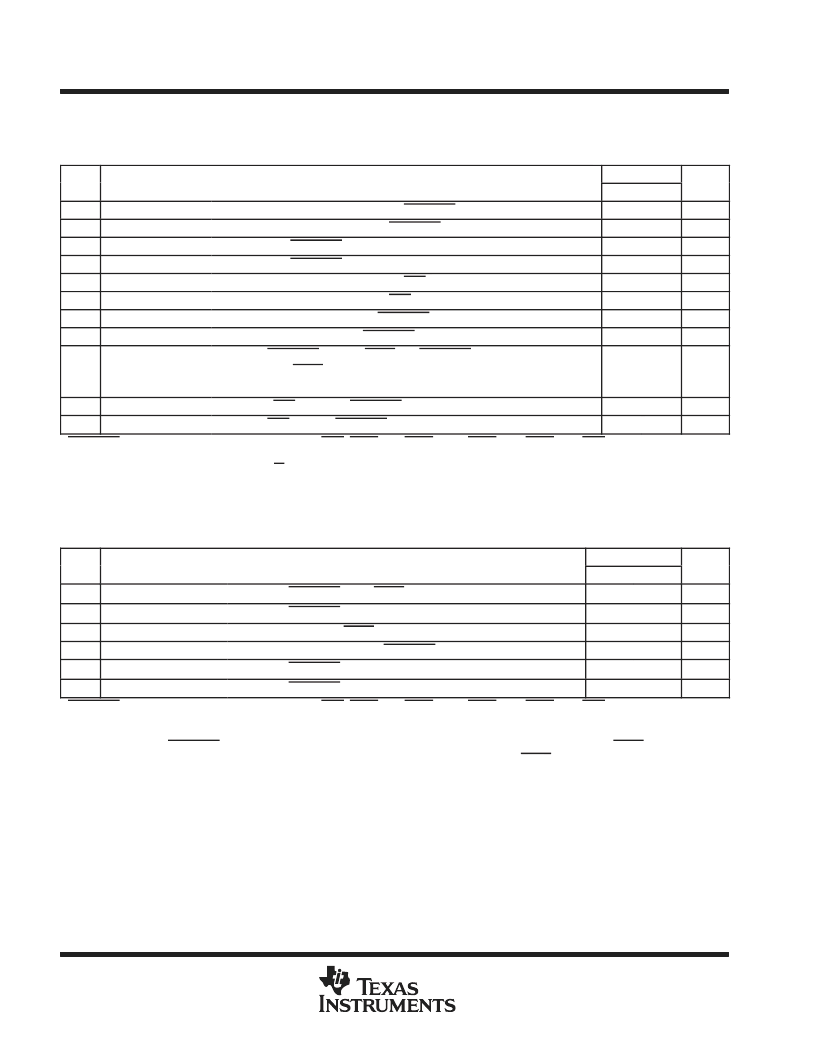- 您現(xiàn)在的位置:買賣IC網(wǎng) > PDF目錄383960 > TMX32C6411GLZ (Texas Instruments, Inc.) Anti-Static Storage Bags; External Height:5"; External Width:3"; Thickness:0.12" PDF資料下載
參數(shù)資料
| 型號: | TMX32C6411GLZ |
| 廠商: | Texas Instruments, Inc. |
| 英文描述: | Anti-Static Storage Bags; External Height:5"; External Width:3"; Thickness:0.12" |
| 中文描述: | 定點數(shù)字信號處理器 |
| 文件頁數(shù): | 94/119頁 |
| 文件大?。?/td> | 1742K |
| 代理商: | TMX32C6411GLZ |
第1頁第2頁第3頁第4頁第5頁第6頁第7頁第8頁第9頁第10頁第11頁第12頁第13頁第14頁第15頁第16頁第17頁第18頁第19頁第20頁第21頁第22頁第23頁第24頁第25頁第26頁第27頁第28頁第29頁第30頁第31頁第32頁第33頁第34頁第35頁第36頁第37頁第38頁第39頁第40頁第41頁第42頁第43頁第44頁第45頁第46頁第47頁第48頁第49頁第50頁第51頁第52頁第53頁第54頁第55頁第56頁第57頁第58頁第59頁第60頁第61頁第62頁第63頁第64頁第65頁第66頁第67頁第68頁第69頁第70頁第71頁第72頁第73頁第74頁第75頁第76頁第77頁第78頁第79頁第80頁第81頁第82頁第83頁第84頁第85頁第86頁第87頁第88頁第89頁第90頁第91頁第92頁第93頁當前第94頁第95頁第96頁第97頁第98頁第99頁第100頁第101頁第102頁第103頁第104頁第105頁第106頁第107頁第108頁第109頁第110頁第111頁第112頁第113頁第114頁第115頁第116頁第117頁第118頁第119頁

SPRS196H MARCH 2002 REVISED JULY 2004
94
POST OFFICE BOX 1443
HOUSTON, TEXAS 772511443
HOST-PORT INTERFACE (HPI) TIMING
timing requirements for host-port interface cycles
(see Figure 39 through Figure 46)
NO.
300
UNIT
MIN
MAX
1
tsu(SELV-HSTBL)
th(HSTBL-SELV)
tw(HSTBL)
tw(HSTBH)
tsu(SELV-HASL)
th(HASL-SELV)
tsu(HDV-HSTBH)
th(HSTBH-HDV)
Setup time, select signals§ valid before HSTROBE low
Hold time, select signals§ valid after HSTROBE low
5
ns
2
2.4
4P
ns
3
Pulse duration, HSTROBE low
ns
4
Pulse duration, HSTROBE high between consecutive accesses
Setup time, select signals§ valid before HAS low
Hold time, select signals§ valid after HAS low
4P
ns
10
5
ns
11
2
ns
12
Setup time, host data valid before HSTROBE high
5
ns
13
Hold time, host data valid after HSTROBE high
2.8
ns
14
th(HRDYL-HSTBL)
Hold time, HSTROBE low after HRDY low. HSTROBE should not be
inactivated until HRDY is active (low); otherwise, HPI writes will not complete
properly.
2
ns
18
tsu(HASL-HSTBL)
th(HSTBL-HASL)
Setup time, HAS low before HSTROBE low
2
ns
19
Hold time, HAS low after HSTROBE low
2.1
ns
HSTROBE refers to the following logical operation on HCS, HDS1, and HDS2: [NOT(HDS1 XOR HDS2)] OR HCS.
P = 1/CPU clock frequency in ns. For example, when running parts at 300 MHz, use P = 3.33 ns.
§Select signals include: HCNTL[1:0] and HR/W. For HPI16 mode only, select signals also include HHWIL.
Select the parameter value of 4P or 12.5 ns, whichever is greater.
switching characteristics over recommended operating conditions during host-port interface
cycles
(see Figure 39 through Figure 46)
NO.
PARAMETER
300
UNIT
MIN
MAX
6
td(HSTBL-HRDYH)
td(HSTBL-HDLZ)
td(HDV-HRDYL)
toh(HSTBH-HDV)
td(HSTBH-HDHZ)
td(HSTBL-HDV)
HSTROBE refers to the following logical operation on HCS, HDS1, and HDS2: [NOT(HDS1 XOR HDS2)] OR HCS.
P = 1/CPU clock frequency in ns. For example, when running parts at 300 MHz, use P = 3.33 ns.
#This parameter is used during HPID reads and writes. For reads, at the beginning of a word transfer (HPI32) or the first half-word transfer (HPI16)
on the falling edge of HSTROBE, the HPI sends the request to the EDMA internal address generation hardware, and HRDY remains high until
the EDMA internal address generation hardware loads the requested data into HPID. For writes, HRDY goes high if the internal write buffer is
full.
Delay time, HSTROBE low to HRDY high#
1.3
4P+8
ns
7
Delay time, HSTROBE low to HD low impedance for an HPI read
2
ns
8
Delay time, HD valid to HRDY low
3
ns
9
Output hold time, HD valid after HSTROBE high
1.5
ns
15
Delay time, HSTROBE high to HD high impedance
12
ns
16
Delay time, HSTROBE low to HD valid (HPI16 mode, 2nd half-word only)
4P+8
ns
相關PDF資料 |
PDF描述 |
|---|---|
| TMP320C6411GLZ | FIXED POINT DIGITAL SIGNAL PROCESSOR |
| TMP470R1B768PGE | 16/32-Bit RISC Flash Microcontroller |
| TMP47C020 | Transient Voltage Suppressor Diodes |
| TMP47C020G | Transient Voltage Suppressor Diodes |
| TMP47C050 | Transient Voltage Suppressor Diodes |
相關代理商/技術參數(shù) |
參數(shù)描述 |
|---|---|
| TMX32C6414EGLZ6E3 | 制造商:Rochester Electronics LLC 功能描述:- Bulk |
| TMX32C6415EGLZ5E0 | 制造商:Rochester Electronics LLC 功能描述:LAPLACE, REV. 2.0, 500 MHZ, 100 MHZ EMIF - Bulk |
| TMX32C6416EGLZ5E0 | 制造商:Rochester Electronics LLC 功能描述:- Bulk |
| TMX32TCI6482BZTZA2 | 制造商:Texas Instruments 功能描述: |
| TMX32TCI6616BXCYPA | 制造商:Texas Instruments 功能描述: |
發(fā)布緊急采購,3分鐘左右您將得到回復。